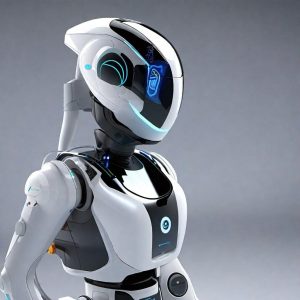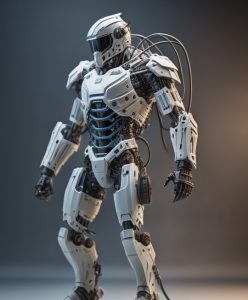
“Valkyrie, also known as Valkyrie-1, is a prototype humanoid robot created by NASA scientists for space programs and military needs. Technical characteristics The robot is 1.9 meters high and weighs 125 kilograms. It has 44 degrees of freedom. The Valkyrie has arms with movable wrists and hands, as well as 7 degrees of freedom, and >>>>



